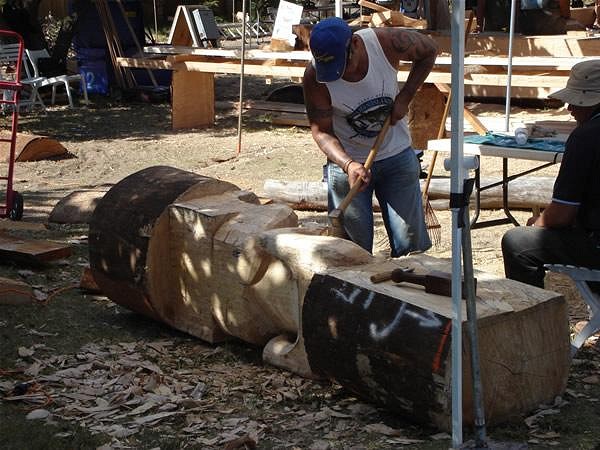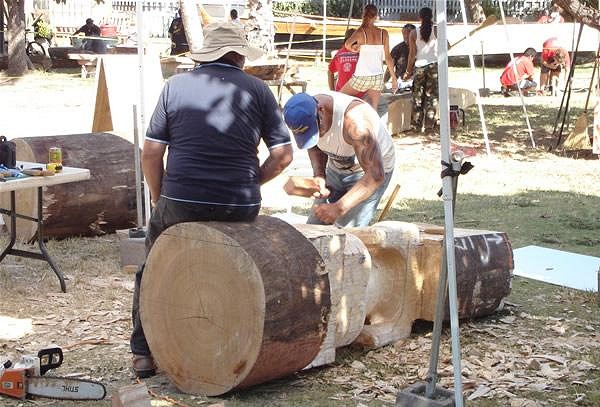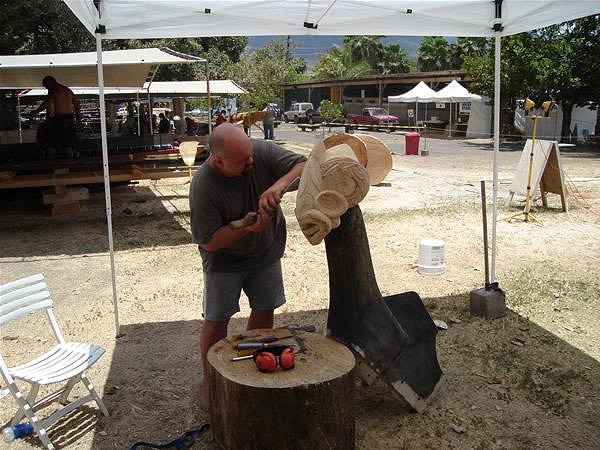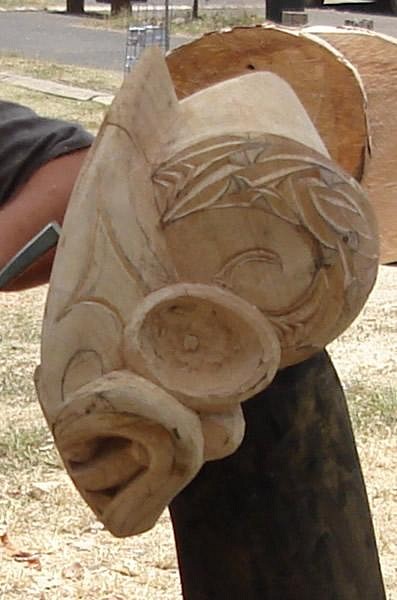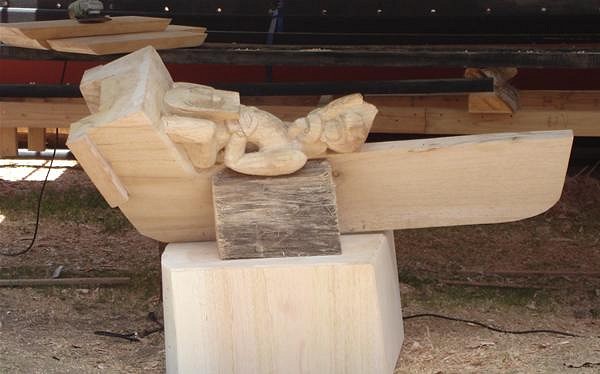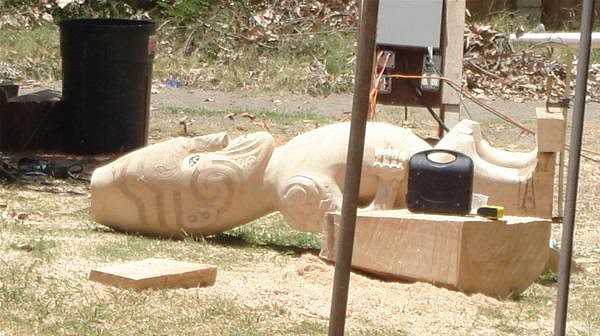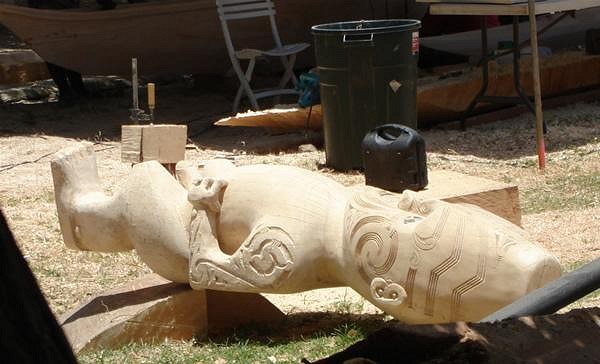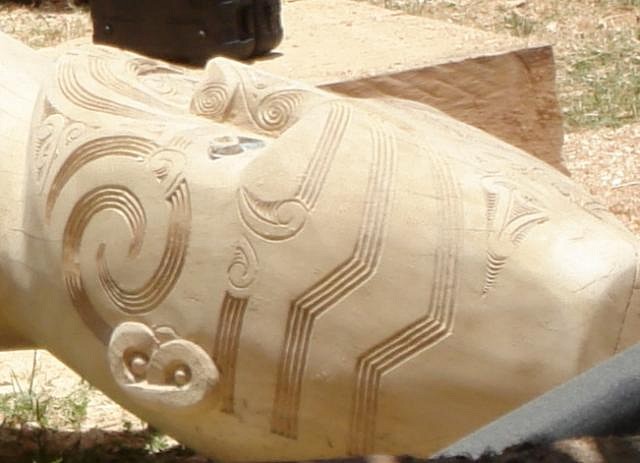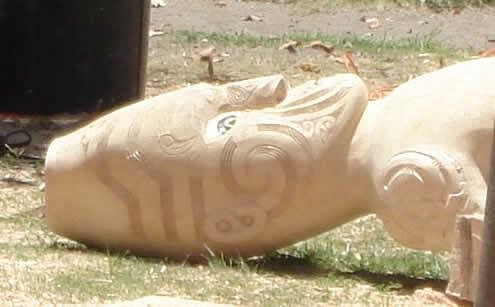Tiki Central / Tiki Carving / Maui International Festival of Canoes 2007 (2008 pg3)
Post #405654 by Toataiaha on Tue, Sep 2, 2008 9:16 PM
|
T
Toataiaha
Posted
posted
on
Tue, Sep 2, 2008 9:16 PM
I came across this page , that adds to these great photos taken by AlienTiki in 2007 "" Open Polytechnic represented at international carving festival Held each May for the last nine years, the festival provides an opportunity for master carvers and artisans to showcase their skills in carving and share their indigenous knowledge across cultures. Master canoe builder Hector Busby led the New Zealand contingent which also included Rangi Hetet, master carver and mentor to The Open Polytechnic’s carving course, and renowned carver Sam Hauwaho, tutor for the course. “We’ve had an association with Hector since 1989 when we carved two canoes for the 1990 Petone Settler’s celebrations, and he brought down a group to teach us how to paddle, and we took the canoes into Wellington harbour,” says Sam. Held in view of the public, the festival participants spend two weeks carving traditional canoes, tiki and drums. The New Zealand contingent carving both a waka and a tekoteko. “Because there is no tradition of tiki carving in New Zealand, and we didn’t feel it was culturally appropriate to imitate a Hawaiian piece, we instead chose to carve a tekoteko that was over 6-foot high, along with our waka. The tekoteko symbolised Tangaroa, the guardian of the sea, and since Hawaii has a close association with the water it suited the design that went into the piece,” explains Sam. “Attending the festival was a fantastic opportunity to meet master carvers from many different nations, and learn from each other so that we can incorporate new techniques into our work. I personally learnt new ways of lashing the canoes, and also new cutting techniques. The Polytechnic’s advanced level 6 Diploma in Maori Art and Design has a waka component to it, and it will be quite fitting to incorporate some of these new aspects into it.” Master carver Rangi Hetet governed what the New Zealand contingent carved at the festival says Sam. “Rangi’s knowledge and input was invaluable, he is my teacher and I will always be learning from him.” The New Zealand waka stood out from the other canoes as surface designs on canoes are almost unique to Maori carvers. “Aside from Tonga, no other Pacific nation use surface designs on their canoes,” says Sam. The New Zealand contingent also had to learn quickly how to cut the wood supplied for the festival. Used to softer woods such as totara, matai and kauri, the carvers were carving their designs into the Albizia tree, a quick growing South African tree that the Hawaiians use so they can preserve stocks of their scarce native timbers. “Carving in this type of wood slowed me down. You have to be really careful because if you cut it a certain way it would break right through the tree,” explains Sam. The first few days of the festival were tough as participants got used to the sweltering heat, and working 12 hour days for the duration of the festival. “What made the festival so enjoyable for me was being around so many master carvers and canoe builders, with all the different groups helping each other out with the lifting and cutting of the canoes.” So what makes a master carver? “People have a different view on what a master carver is, and how you get that title,” says Sam. “In my father-in-law Rangi Hetet’s case, he said it was his tribe (Ngati Tuwharetoa) that gave him that title of Tohunga Whakairo (master carver). He said a Tohunga Whakairo needs to be able to carve and organise the carving of a wharenui (meeting house), know karikia related to carving, be fluent in te reo Maori, and be able to design and weave tukutuku panels. Nowadays, times have changed, and to a certain extent it is hard to uphold those traditions.” Having come back from the festival with lots of new techniques and ideas, Sam is looking forward to sharing that knowledge with his students at The Open Polytechnic. "" http://www.openpolytechnic.ac.nz/aboutus/newsandevents/carving |

